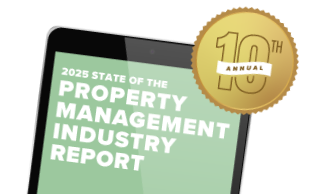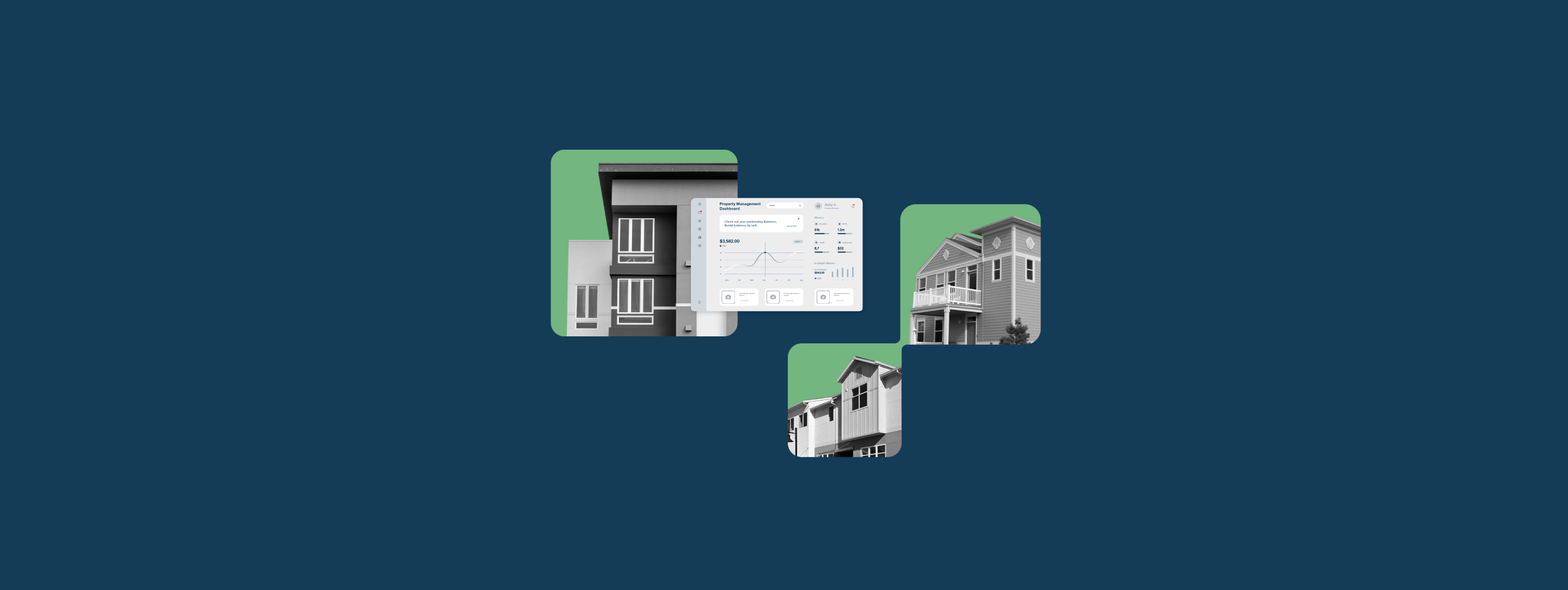In the previous editions of our property management software buying guide, we’ve talked about comparing software using high-level criteria such as price and features. But different property types come with their own host of challenges—and there’s specific tools that can help with each.
Start your free trial today!
Try Buildium for free for 14 days. No credit card needed.
Start Your TrialThis guide will walk you through what you need to know before purchasing multifamily property management software, including key features to look for and how to compare different solutions that might seem similar at first glance.
You can follow the advice below to make an informed purchasing decision that benefits your business in the long term.
Note: If you’re interested in other factors to consider when buying property management software, check out our other guides in this series:
- Essential property management software features
- Comparing property management software pricing
- Comparing property management software reviews
- 7 steps to find the best property management software for your business
What Is Multifamily Property Management Software?
Multifamily property management software is a comprehensive tool designed to help you oversee multiple rental units with less effort, whether you’re focused on a single property or have a portfolio with buildings spread across several locations.
By focusing on processes and workflows that are specific to multifamily properties, this type of software can help property managers reduce costs and boost efficiency from more accurate record keeping to faster communication.
Let’s take a look at some of those benefits in detail.
How Does Multifamily Property Management Software Benefit Your Business?
Managing multifamily properties comes with its own set of challenges, from dealing with multiple leases for the same property and maintaining different types of units and common areas, to managing frequent tenant turnover and tenant relationships within a property.
All these factors add complexity to the job. Luckily multifamily property management software simplifies your operations and improves productivity in several ways:
Centralized Management: The software stores all property-related information in a single location, making it easily accessible and manageable.
Automated Processes: Tasks such as rent collection, lease renewals, and maintenance requests, which you may be handling manually, can be automated, reducing your team’s workload and minimizing errors.
Enhanced Communication: Tenant and owner portals enable rapid, more transparent communication, giving tenants a convenient way to submit requests and make payments online, and owners reliable access to financial reports and updates.
Comprehensive Reporting: Advanced analytics and reporting tools pull from data collected from across your business, giving you insights into property and business performance. You can use these insights to make better-informed decisions.
Key Features of Multifamily Property Management Software
Most software companies you find will showcase a long list of features on their product pages, but some are more important than others. These core features can improve the way you work and speed up important processes for your business:
Marketing and Lead-to-Lease Tools: These tools automate everything from listings to signed leases. The software should capture, track, and assist in screening applications for multiple units, as well as send, sign, and store leases electronically.
Maintenance Management: Look for tools that track and manage maintenance requests, work orders, and vendor communications. This can also include planning regular maintenance for common areas and larger landscaping projects.
Accounting and Financial Management: Property management software should include a system that automates rent collection, tracks expenses, and generates financial reports for all your properties, all in one place. Look for the ability to generate and send 1099s electronically, as well, so you’ll be prepared well ahead of tax season.
Tenant and Owner Portals: Portals allow tenants to make payments and submit requests, and owners to access financial reports and property updates. This reduces the number of tenant and owner calls your staff handles and adds an extra layer of convenience with no additional effort on your part.
Analytics and Reporting: Look for software that makes it easy to collect and analyze data from across your business. It should have analytics capabilities that pull insights from this data and let you generate customizable reports in just a few clicks.
Check out the video below for learn more about the top property management software features:
Factors to Help You Compare Multifamily Property Management Software Options
Beyond the list of features above, there are a few other considerations that can help you choose between multifamily property management software platforms, especially if their list of features seem similar.
When evaluating different solutions, consider the following factors and how each of your options measures up:
Ease of Use: The software should be user-friendly and easy to navigate for both property managers and tenants. It should include mobile apps for management on the go, whether you’re conducting property inspections, meeting with tenants, or handling maintenance issues. A dedicated app for residents can also improve tenant retention and lay the groundwork for more reliable communication.
Scalability and Customization: The software should be able to grow with your business and handle an increasing number of units and properties. Look for solutions that allow you to customize dashboards, reports, and user interfaces that can be adapted based on your evolving needs.
Flexibility and Integrations: Each property management business has unique needs and workflows. The software should meet those needs through features such as an open API and integrations with other systems and tools that you are already using. That could include accounting software, CRM systems, marketing platforms, and more, which help you set up cohesive and efficient workflows, eliminating the need for manual data entry and reducing the risk of errors.
Customer Support: Look for reliable customer support to help you resolve issues quickly and maintain operations efficiently. Effective training and onboarding support helps your team adapt to the new software and start using it to its full potential right out of the gate.
Security: The software should have robust security measures to protect sensitive tenant and financial information. It should comply with industry standards and regulations to protect your data from breaches and unauthorized access while allowing for encryption, multi-factor authentication, and regular security audits.
Pricing: Some software solutions are priced per door, meaning you pay based on the number of units you manage. Others offer feature packages, where you pay for a set of features. Look for a pricing plan that works for your business—and keep an eye out for extra or hidden fees for services.
For a more detailed breakdown of property management software pricing, check out the video below:
Why Buildium Is a Great Fit for Multifamily Property Managers
If you are searching for a leading property management software that offers a comprehensive suite of features tailored for multifamily property managers, consider looking into Buildium. It’s a platform that combines features designed to tackle specific multifamily property management challenges with a simple-to-use interface.
Here are some reasons why Buildium stands out:
All-In-One Leasing: Buildium manages every step of the lead-to-lease cycle, including marketing, tenant screening, lease signing, handling move-ins and move-outs, and more.
Robust Maintenance Management: The software lets you track and manage maintenance requests efficiently, work orders, and vendor communications, and even offers a 24/7 maintenance contact center integration.
Advanced Accounting Tools: Buildium’s accounting features can automate online rent collection, track expenses, generate financial reports and get ahead of tax season with simplified1099 e-Filing.
Tenant and Owner Portals: Dedicated Resident Center and Owner Portal make it easy for tenants to make payments and submit requests, and owners to access financial reports and property updates.
Analytics and Insights: You can obtain valuable insights into property performance with Buildium’s advanced analytics and customizable reports.
Integrations and Open API: Buildium’s Marketplace offers a host of vetted apps that are already integrated with Buildium, each focused on making part of your job easier. You can use Buildium’s Open API to integrate or even build your own solutions, as well.
These capabilities are just the tip of the iceberg. You can test out the full range of benefits Buildium offers with a 14-day free trial, no credit card required. It’s the best way to test the software’s features against your own business without any upfront commitment.
Finding the Right Multifamily Property Management Software for Your Business
Choosing the right multifamily property management software can have a lasting impact on your business and your prospects for growth, so it pays to follow a careful decision-making process.
Remember, the key to selecting the right software lies in understanding your specific needs and thoroughly evaluating different options based on the features that matter most to you. Comprehensive software such as Builidum can likely meet your needs, even as you grow, but be sure to take advantage of free trials, read vetted customer reviews, and seek recommendations from industry peers to make a well-informed decision.
By putting in the research up front, you’ll make the best decision that pays dividends down the line.
Read more on Multifamily

